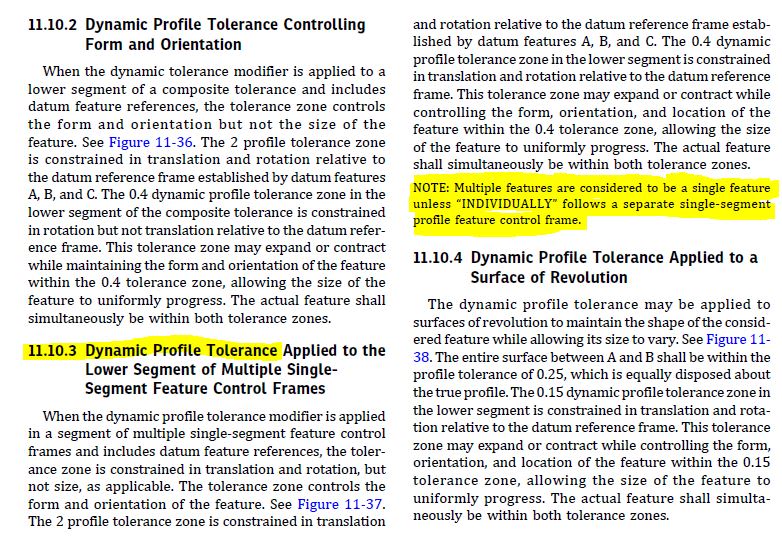JCReynolds79
Automotive
Hi all,
Numbers of holes , equally spaced on a PCD. The size of the holes can be quite loose, say, +/- 0.2mm. But what I am trying to think of is a way to control the variation of hole sizes. In sentence speak, Holes can be +/-0.2 but each hole must be within 0.05 of each other.
e.g. dia 10 +/- holes specified gives a hole size target of 9.8-10.2. Lets say the first hole we make is 9.9. I want to ensure/control/specify that all other holes in the pattern must be within +/-0.05 of first hole. So all other holes must now lie within range 9.85-9.95.
Its like I want a composite tolerance on the hole size....
Thanks!
Regards,
Jon Reynolds
Numbers of holes , equally spaced on a PCD. The size of the holes can be quite loose, say, +/- 0.2mm. But what I am trying to think of is a way to control the variation of hole sizes. In sentence speak, Holes can be +/-0.2 but each hole must be within 0.05 of each other.
e.g. dia 10 +/- holes specified gives a hole size target of 9.8-10.2. Lets say the first hole we make is 9.9. I want to ensure/control/specify that all other holes in the pattern must be within +/-0.05 of first hole. So all other holes must now lie within range 9.85-9.95.
Its like I want a composite tolerance on the hole size....
Thanks!
Regards,
Jon Reynolds


